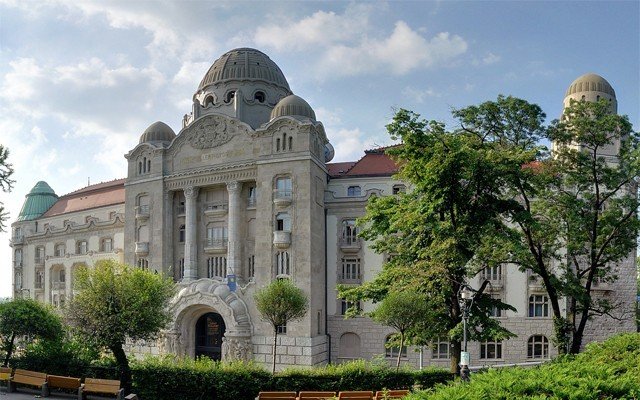The mysteries of the underground Budapest
Did you know that there is an underground tunnel connecting Gellért, Rác and Rudas Baths? Can you imagine living in a limestone flat in Budafok? Have you been to the secret passages of the cellars of Kőbánya? Travelo.hu shows the capital city from an unusual point of view: from the bottom.
Gellért Bath: fount and railway
Under the building of Gellért Bath (opened in 1918), there is a fount, and a tunnel system. A hundred years ago, a little pond coulod be seen at Gellért Square, and it became underground when the embankment was constructed. The oiriginal fount is not used anymore, as it is mixed with the water of the Danube when the water level is high. Consequently, the sings of the floods can be seen ont he walls around the pond.
The fount is not the only interesting thing under the bath. It is connected to Rác and Rudas baths with a 1.5 kms long tunnel, complemented with rails. Although the current conditions are not prevailing down there, but an underground railway connecting the famous baths of Buda would be a huge tourist attraction. The founts that supply the bath nowadays can also be reached from the tunnel.
The tunnel can be visited in a group; previous registration is needed.
Cave house in Budafok
The cave houses were created as a result of the facts that the locals of Budafok used to deal with the mining of limestone. By the end of the 1800s, 7-800 people lived in homes carved into limestone. The lack of natural light, and the constant 16-17 degrees were compensated by the cheap costs. Peasants and factory workers lived in these stone houses until the mid-1960s.
These special houses were buried, that is why the yard at Veréb Street 2-4. is especially important. The houses are are furnished exactly as they were in the sixties, when the last tenants lived here.
The cavehouse museum is shown by Péter Appel, you can log in by phone. (+36 20 447 83 33)
Cellars in Kőbánya
This huge system of cellars can be visited for a couple of years, and it is very difficult to get down, due to the huge interest. It functions as a filming location, a host to bike races, and a diving center.
The system was established as a consequence of the empty space left behind by limestone miners. The mine was finally closed in the 1890s, after a series of collapse. After this, breweries took possession of the abandoned cellars, and it also functioned as a shelter during the World War II. From March 1944, aircraft production also ran underground.
Nowadays, apart from film crews, Dreher Brewery has been using a part of the cellars. Divers can also discover the flooded tunnel, it is exciting both for advanced and beginner ones.
After previous discussion, the cellars can be viewed with the help of BudapestScenes.
based on article of travelo.hu
translated by Vivien Pasztai
Photo: Melinda Juhász / www.amdala.hu
Source: http://travelo.hu
please make a donation here
Hot news
Serbia’s big energy move: Partnering with Hungary’s Paks Nuclear Plant
Orbán cabinet: Improving competitiveness cornerstone of Hungary’s EU presidency
Top Hungary news: Olympics in Budapest, Russian gas, Hungary’s debt, new Müller store, Prince William as landlord, expensive panel flats – 18 November, 2024
Hungarian FM: Suspending EU-Israel political dialogue ‘would be mistake’
European Commission demands a further EUR 60 million from Hungary
Hungary’s MÁV group to undergo major restructuring






